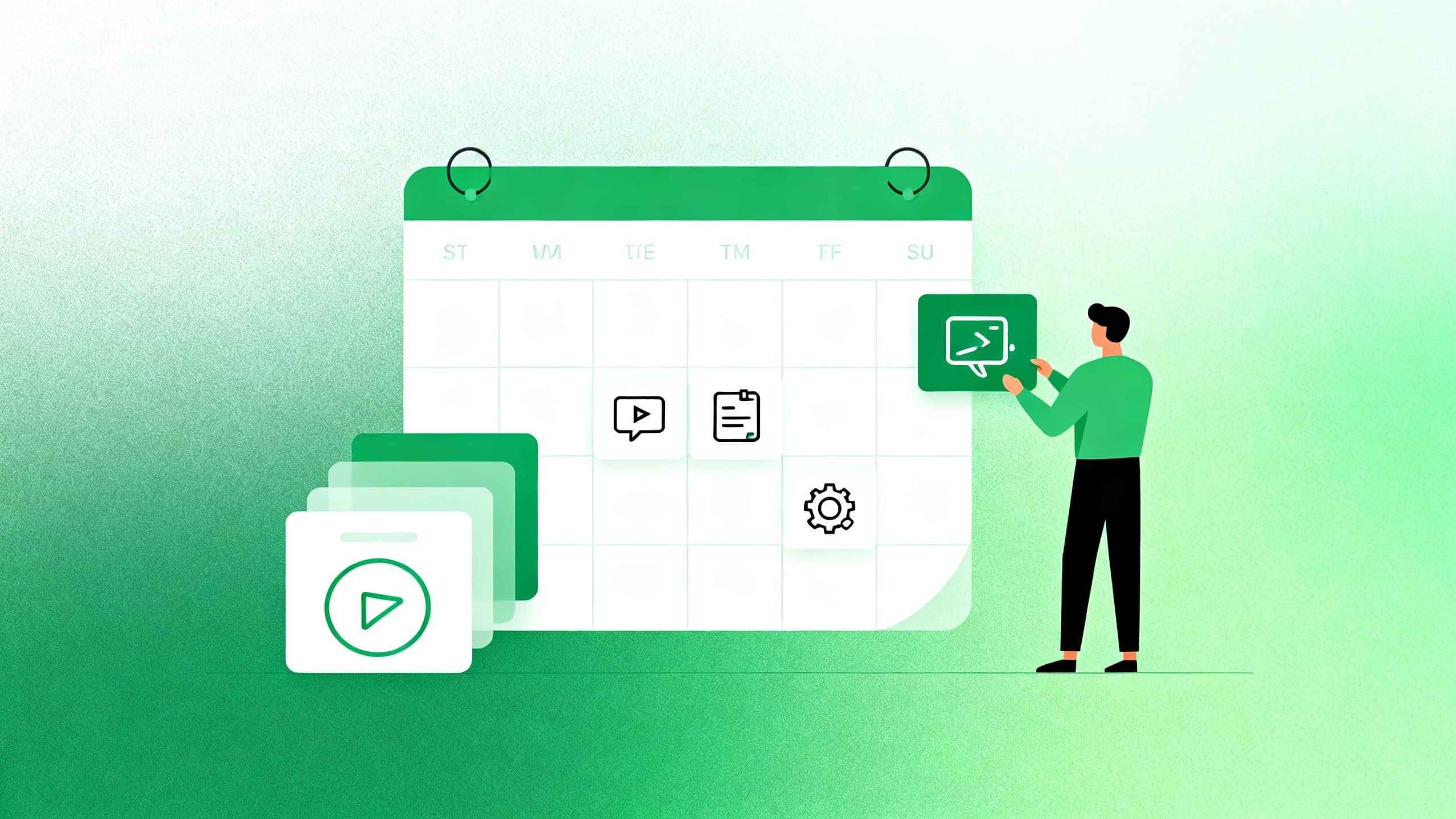The Dark Side of Faceless Content: What Nobody Tells You
Faceless content may look easy, but hidden pitfalls include burnout, trend chasing, copycats, and monetization myths. Learn the truth behind faceless content creation and how to succeed in 2025.

Introduction
In 2025, faceless content dominates TikTok, YouTube Shorts, and Instagram Reels. From AI-generated art to text-to-video explainers and voiceover-driven storytelling, faceless channels are exploding because they promise creators the ability to grow massive audiences without ever showing their face. For entrepreneurs, students, or anyone who values privacy, this model feels like the golden ticket.
But here’s the hard truth: while faceless content looks like the “easy” path to success, the reality is far more complicated. Hidden beneath the hype are challenges, burnout, copycat saturation, and monetization myths, that can derail creators before they ever see results.
In this blog, I’m pulling back the curtain. I’ll break down the illusions that make faceless content seem simple, expose the traps creators fall into, and share practical strategies to help you navigate this new creator economy without losing your edge.
Why This Topic Is Relevant Today
Faceless content has surged in relevance because of two converging trends. First, AI tools like Clippie AI, MidJourney, and ElevenLabs have made high-quality, faceless content production faster than ever before. Creators can now generate realistic voiceovers, captivating AI art, and short-form videos in under an hour. Second, short-form platforms dominate global consumption. Statista’s 2025 report revealed that 67% of all mobile video consumption comes from TikTok, YouTube Shorts, and Reels combined.
At the same time, the creator economy is ballooning to $500 billion in projected value by 2027. With so many new creators entering the space, faceless channels seem like an attractive entry point. After all, if you don’t have to film yourself, you can scale content endlessly right?
Not exactly. For every faceless channel hitting 100K subscribers, there are thousands that stagnate or burn out. Without understanding the pitfalls, creators risk wasting time, money, and energy. That’s why now is the perfect moment to have an honest conversation about the dark side of faceless content creation.
What Is Faceless Content?
In plain terms, faceless content is any form of digital content where the creator does not appear on screen. Instead, creators rely on visuals such as stock footage, AI-generated art, animations, or text-to-video content, often paired with voiceovers and captions.
Some common forms of faceless content in 2025 include:
AI art shorts: Visual sequences generated with tools like MidJourney or Stable Diffusion, turned into story-driven videos.
Narrated explainers: Educational content where a voiceover explains concepts using stock footage, graphics, or animations.
Compilation videos: Curated clips around niches like finance, relationships, or productivity.
Storytelling shorts: AI voices narrating fictional or horror stories with dynamic visuals.
The appeal is obvious: you don’t need to be on camera, you don’t need expensive gear, and you can scale quickly with AI automation. But the reality is more nuanced.
Overview
This blog will dive into the hidden challenges of faceless content and show you how to avoid them. We’ll explore why faceless content feels deceptively easy but actually isn’t, the burnout trap of chasing algorithm-driven trends, the copycat problem and how to stand out using tools like Clippie AI, the myths versus realities of monetization, and finally, actionable advice for serious creators who want to succeed long term.
Table of Contents
Why faceless content feels “easy” but isn’t
The burnout trap of chasing trends
Copycat risk: how to stand out with Clippie AI
Monetization myths vs. reality
Final thoughts for serious creators
1. Why Faceless Content Feels “Easy” but Isn’t
At first glance, faceless content looks like a hack. You don’t need to worry about appearance, lighting, or speaking confidently on camera. With AI doing most of the heavy lifting, the process seems automated. But this illusion of ease hides the real challenges.
The truth is that faceless content demands strategy, creativity, and consistency. While you can technically generate videos quickly, standing out in oversaturated niches requires more than automation. If your content lacks originality, audiences scroll past. Worse, the algorithms reward engagement, not volume. A hundred low-quality uploads won’t beat one high-quality short that captures attention.
Think of faceless content like building a business. Yes, the tools make production easier, but you still need a unique value proposition, brand voice, and distribution strategy. Without those, you’re just adding noise to an already crowded feed.
2. The Burnout Trap of Chasing Trends
Another hidden danger of faceless content is burnout. Because many faceless creators rely on trending topics to go viral, they end up trapped in a cycle of constantly chasing the next algorithm-friendly idea.
This cycle looks like:
Scrolling endlessly for the newest viral sound or topic.
Producing dozens of quick-turnaround videos hoping one sticks.
Feeling demotivated when content underperforms.
The irony is that faceless content, which was supposed to be low-pressure, often becomes more stressful than traditional content creation. When you’re not building a sustainable system, you’re just reacting and that’s a recipe for creative exhaustion.
The key to avoiding this trap is to blend trend-based content with evergreen content. For example, instead of making only “viral AI filters this week” videos, also build timeless explainers like “How to Use MidJourney Prompts for Beginners.” This creates balance, so you’re not fully dependent on algorithm spikes.
3. Copycat Risk: How to Stand Out with Clippie AI
One of the biggest threats in faceless content is copycats. Because most creators use the same AI tools, prompts, and templates, content often looks identical. Viewers get tired of repetitive slideshows or rehashed prompts, and platforms deprioritize duplicate content.
This is where Clippie AI becomes a game-changer. Beyond basic video generation, Clippie allows creators to add unique storytelling layers, custom voiceovers, dynamic captions, and even AI-driven character narrations that give videos a distinct brand identity. For instance, instead of posting yet another “Disney princess in cyberpunk style” reel, you could narrate a mini-story with captions, music, and character arcs.
Originality is the antidote to saturation. Creators who lean into storytelling, voice identity, and branded editing styles stand out even in oversaturated niches. With Clippie AI’s batch production and customization features, it’s possible to maintain high output while also creating content that feels uniquely yours.
4. Monetization Myths vs. Reality
One of the most misleading narratives about faceless content is that it’s an easy road to passive income. Many creators believe that once their videos hit a million views, money will automatically flow in. The reality is more complicated.
Yes, monetization opportunities exist, YouTube Shorts ad revenue, TikTok Creativity Program payouts, affiliate marketing, and sponsorships, but not all faceless content qualifies. Platforms require content to be original, engaging, and non-spammy. Simple AI slideshows without value additions are often demonetized.
Another myth is that virality equals income. A TikTok short with 10 million views might earn less than a YouTube Short with 2 million views, depending on the platform’s CPM (cost per thousand views). Similarly, affiliate income depends less on views and more on audience trust.
The reality: faceless content can be monetized, but only if it’s paired with a clear strategy. That means diversifying revenue streams, ads, affiliates, digital products, and sponsorships, and focusing on building loyal audiences, not just chasing raw numbers.
5. Final Thoughts for Serious Creators
Faceless content isn’t a scam, nor is it a guaranteed shortcut. It’s a tool - a powerful one, but like any tool, it depends on how you use it. Creators who succeed with faceless content in 2025 are those who treat it like a real business: they develop unique angles, avoid burnout by balancing evergreen and trend-driven posts, invest in storytelling, and build monetization strategies beyond ad revenue.
If you’re serious about creating faceless content, the dark side doesn’t need to hold you back. Recognize the challenges, plan for them, and you’ll be far ahead of the countless creators who quit after the first wave of excitement fades.
FAQs
Q1: Is faceless content still profitable in 2025? Yes, but profitability depends on originality and monetization strategy. Oversaturated, copycat content often fails, while story-driven, branded faceless content continues to thrive.
Q2: Can faceless content be monetized with YouTube Shorts? Yes, but only if the content is unique and adds value. Low-effort slideshows may not qualify under YouTube’s Partner Program rules.
Q3: How do I avoid burnout as a faceless creator? Mix evergreen content with trend-based videos, automate workflows with tools like Clippie AI, and create a posting schedule that balances quality with consistency.
Q4: What niches work best for faceless content? Finance, education, storytelling (horror, sci-fi, relationships), and AI art are performing well in 2025. The key is to find a niche you can sustain long-term.
Q5: How do I stand out when so many people use AI tools? Focus on storytelling, captions, and voiceovers that add unique personality. Tools like Clippie AI allow customization that prevents your content from looking generic.
Conclusion
Faceless content has transformed the creator economy, but behind the hype lies a set of challenges that many overlook. The path isn’t as simple as pushing out endless AI-generated videos, it requires originality, consistency, and smart monetization strategies.
The good news? By understanding these pitfalls and preparing for them, you can build a faceless content channel that doesn’t just go viral but also grows sustainably and profitably. Don’t let the dark side scare you off. Treat faceless content like a real business, and it can open doors to opportunities that traditional creator models never could.
👉 Ready to start? Begin by experimenting with one faceless video format this week. Focus on quality, storytelling, and audience value and build from there.
Related Blog Posts
Faceless Content Creation: Why AI-First Channels Are Winning in 2025
10 AI Tools Every Creator Should Use for Short-Form Video in 2025
The Complete Guide to Monetizing YouTube Shorts in 2025
Read more

5 TikTok Hooks That Instantly Increase Watch Time
Master the exact hook formulas driving 70-90% retention on TikTok. Complete guide with proven templates, niche adaptations, psychological principles, and common mistakes to avoid.

Top 20 AI Tools for Faceless Content Creation in 2026 (Ranked)
Definitive ranked guide to the best AI tools for faceless content creation in 2026. Expert analysis of video generation, editing, voices, captions, and complete production workflows.

How to Build a Content Calendar That Actually Works
Master content calendar creation with proven strategies for planning, organizing, and executing consistent content. Complete guide to themes, tools, trend balance, and sustainable workflows.